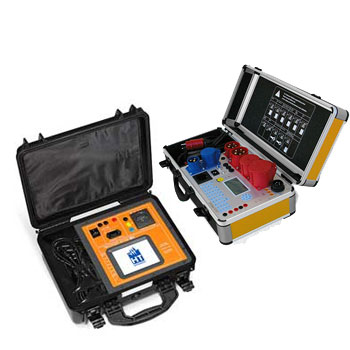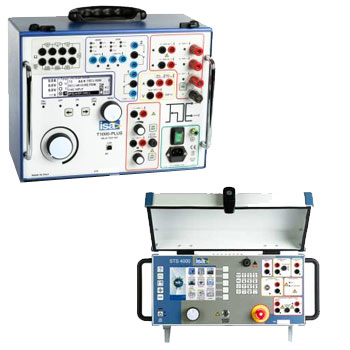
Pressure & Differential Pressure Sensors – from Machine to Control System
Pressure sensors, pressure transmitters and differential pressure sensors measure gauge, absolute or Δp pressure in pneumatics, hydraulics, process and building automation. Depending on the task you can choose ceramic, piezoresistive, thin-film or capacitive sensing elements—with outputs from 4–20 mA/0–10 V to IO-Link, Modbus RTU/RS-485, HART or Ethernet. Versions cover vacuum to high pressure, media resistance (e.g., 316L, Hastelloy®), hygienic design (EHEDG) and ATEX/IECEx.
ICS Schneider Messtechnik supports sizing, material/connection selection, damping and protection (snubbers, diaphragm seals, cooling elements), calibration and optional IIoT integration into Edge/SCADA/Cloud (MQTT/HTTPS). The result: stable readings, fewer stoppages and traceable quality.
FAQ on Pressure & Differential Pressure Sensors
Selection, sensing principle, accuracy, process connections, media, signals, approvals and integration.
What’s the difference between a sensor, transmitter and pressure switch?
Sensor = sensing element/raw signal; transmitter = conditioned, scaled output (analog/digital); pressure switch = discrete switching points instead of a continuous value.
Gauge, absolute or differential pressure—what fits my use case?
- Gauge (g): versus ambient (hydraulics/pneumatics).
- Absolute (a): vacuum, barometry, processes needing a fixed zero.
- Δp: filter monitoring, flow over orifice/plate, level in closed tanks.
How do I choose the measuring range?
Rule of thumb: working pressure × 1.3–2.0. With pulsation/spikes, select a higher range or add a snubber/damper.
How is accuracy specified (FE/TEB)?
Consider not only base accuracy (e.g., ±0.25% FS) but the Total Error Band (TEB) across temperature and drift. Choose tighter specs for QA/test applications.
Which output signals are available?
| Signal | Type | Advantage | Typical use |
|---|---|---|---|
| 4–20 mA | Analog, current | Noise-immune, long runs | Industrial/PLC |
| 0–10 V | Analog, voltage | Simple evaluation | Building/HVAC |
| Ratiometric | Analog | Low power | Embedded/OEM |
| IO-Link | Digital, point-to-point | Parametrization/diagnostics | Machinery |
| Modbus RTU | Digital, bus | Multi-drop/RS-485 | Process/IIoT |
| HART | Analog + digital | 4–20 mA plus variables | Process industries |
| Ethernet | Digital | High data rate/IT | Edge/Cloud |
What are common process connections?
| Connection | Standard | Note |
|---|---|---|
| G 1/4, G 1/2 | ISO 228 (BSPP) | Industrial standard |
| ¼″ / ½″ NPT | ASME | Tapered, self-sealing |
| M20×1.5 | ISO metric | EU process industry |
| Tri-Clamp/Varivent® | Hygienic | With/without diaphragm seal |
| Flange | EN/ASME | Higher pressures/media |
What limits apply for media and temperature?
They depend on sensing element, body material and seals. For hot media use a cooling element/siphon or a diaphragm seal.
Which materials suit corrosive media?
316L for many media; Hastelloy®/Monel® for strong corrosion; PTFE/FFKM for seals—check your chemical resistance list.
How stable are sensors over time?
Typical long-term drift is around ±0.1…0.3% FS/year depending on technology. Plan periodic recalibration for critical services.
How do I protect against pulsation and pressure spikes?
Use snubbers/orifice screws, capillaries, remote mounting with a diaphragm seal and configure appropriate filtering/sample rates.
What ingress protection/approvals are available?
Typical IP65–IP67, for washdown IP69K. Hazardous areas: ATEX/IECEx (e.g., Ex ia). Hygienic: EHEDG/FDA-compliant materials.
How do I integrate devices into IIoT?
Connect via RS-485/Modbus, IO-Link, HART to an edge gateway (Modbus→MQTT/HTTPS). Consider topic design, TLS/VPN, roles and audit logs.
What matters during installation?
- Mount without mechanical stress; seal threads per standard.
- Provide vents/drains (steam/condensate).
- Observe installation position—may affect zero.
How do I measure differential pressure correctly?
Plumb the two process ports High/Low correctly; add condensate/gas traps; avoid reversed polarity. For flow via orifice, size the DP range accordingly.
How often should I calibrate?
Recommendation: annually (standard); semi-annual/quarterly for QA-critical services or after overload/service.
What are typical error sources?
- Wrong range → overload/saturation.
- Pulsation without damping → noise/wear.
- Unsuitable seals → leaks/chemical attack.
- Lack of grounding/EMC measures → interference.
How do I convert units (bar/psi/kPa)?
| From | To | Factor |
|---|---|---|
| 1 bar | Pa | 100,000 |
| 1 bar | psi | 14.5038 |
| 1 psi | bar | 0.06895 |
| 1 mbar | Pa | 100 |
Do you provide calibration certificates and documentation?
Yes—for example ISO/DAkkS calibration, EN 10204 3.1, pressure/leak test reports and device/material traceability.
Which cost items should I consider?
| Option | Benefit | Note |
|---|---|---|
| Diaphragm seal | Media/hygiene suitability | Select membrane/fill fluid |
| Snubber/cooling element | Protection/temperature | Extends service life |
| Output/bus | Automation/IIoT | PLC/edge integration |
| Calibration cert | Traceability | Plan interval |

















































































































































































